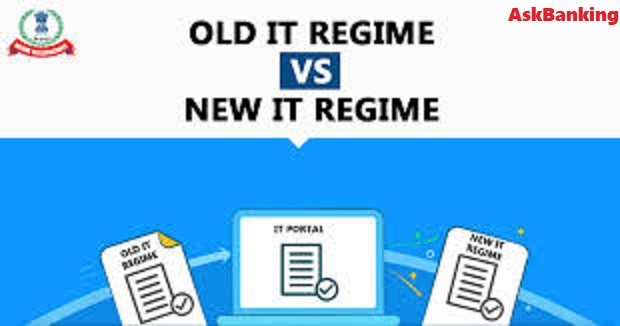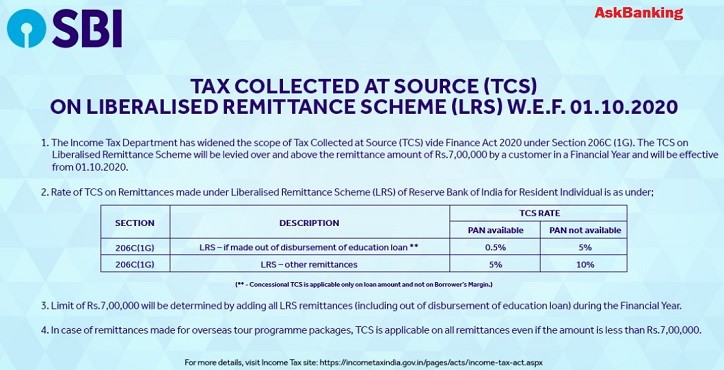
Compare Income tax regime between New & Old – The Finance Act 2020, allows employees, pensioners and others to choose between two different tax slabs (i.e. Old & New tax regime). Old Tax Regime allows employees and others to claim benefit of various deductions and exemptions under various provisions of Income Tax Act, 1961. In the New Tax Regime, an employee, a pensioner, others has to pay tax on the Total Income as per the slab without claiming any benefit.
The Income Tax Rates applicable under Old Tax Regime & New Tax Regime is enumerated below:
OLD TAX REGIME:
Income Tax Slab Rate for F.Y. 2020-21( A.Y. 2021-22) for Individuals Individual (resident or non-resident), who is of the age of less than 60 years on the last day of the relevant previous financial year:
| Income Tax Slab | Tax Rate for Individual & HUF Below the Age Of 60 Years |
|---|---|
| Up to ₹2,50,000* | Nil |
| ₹2,50,001 to ₹5,00,000 | 5% of total income exceeding ₹2,50,000 |
| ₹5,00,001 to ₹10,00,000 | ₹12,500 + 20% of total income exceeding ₹5,00,000 |
| Above ₹10,00,000 | ₹1,12,500 + 30% of total income exceeding ₹10,00,000 |
Resident senior citizen, i.e., every individual, being a resident in India, who is of the age of 60 years or more but less than 80 years at any time during the previous financial year:
| Income Tax Slabs | Tax Rate for Senior citizens aged 60 Years But Less than 80 Years |
|---|---|
| Income up to Rs 3,00,000* | No tax |
| Income from Rs 3,00,000 – Rs 5,00,000 | 5% |
| Income from Rs 5,00,000 – 10,00,000 | 20% |
| Income more than Rs 10,00,000 | 30% |
Resident super senior citizen, i.e., every individual, being a resident in India, who is of the age of 80 years or more at any time during the previous financial year:
| Income Tax Slabs | Tax Rate for Super Senior Citizens (Aged 80 Years And Above) |
|---|---|
| Income up to Rs 5,00,000* | No tax |
| Income from Rs 5,00,000 – 10,00,000 | 20% |
| Income more than Rs 10,00,000 | 30% |
Surcharge & Health and Education cess: – 4% of income tax and surcharge.
10% of income tax where total income exceeds Rs. 50,00,000 but upto Rs.1 Crore.
15% of income tax where total income exceeds Rs. 1,00,00,000 but upto Rs.2 Crore.
25% of income tax where total income exceeds Rs. 2,00,00,000 but upto Rs.5 Crore.
37% of income tax where total income exceeds Rs. 5,00,00,000.
Note:
1. A resident individual is entitled for rebate under section 87A if his total income is up to Rs.5,00,000. The amount of rebate shall be 100% of income-tax or Rs. 12,500, whichever is less.
2. For Salaried Employees a Standard deduction u/s 16 (ia) of Rs. 50,000 or the amount of salary, whichever is lower is available.
Read – Calculate your Income Tax in New Tax regime
NEW TAX REGIME (SECTION 115 BAC)
Income Tax Slab Rate for F.Y. 2020-21( A.Y. 2021-22) for Individuals (irrespective of age) A new tax regime for Individual (irrespective of age) has been introduced vide Finance Act, 2020 to
tax the income of such assessees at lower tax rates if they agree to forego prescribed deductions and exemptions under the Income Tax Act.
| Income Tax Slab | Tax Rate |
|---|---|
| Up to Rs 2.5 lakh | NIL |
| Rs 2.5 lakh to Rs 5 lakh | 5% (Tax rebate of Rs 12,500 available under section 87A) |
| Rs 5 lakh to Rs 7.5 lakh | 10% |
| Rs 7.5 lakh to Rs 10 lakh | 15% |
| Rs 10 lakh to Rs 12.5 lakh | 20% |
| Rs 12.5 lakh to Rs 15 lakh | 25% |
| Rs 15 lakh and above | 30% |
Surcharge & Health and Education cess: – 4% of income tax and surcharge.
10% of income tax where total income exceeds Rs. 50,00,000 but upto Rs.1 Crore.
15% of income tax where total income exceeds Rs. 1,00,00,000 but upto Rs.2 Crore.
25% of income tax where total income exceeds Rs. 2,00,00,000 but upto Rs.5 Crore.
37% of income tax where total income exceeds Rs. 5,00,00,000
Note:
1. Any individual opting to be taxed under the new tax regime from FY 2020-21 onwards will have to give up certain exemptions and deductions as under:
a) Standard deduction of Rs.50,000
b) Leave Travel Allowance under Section 10(5)
c) House Rent Allowance (HRA) under Section 10(13A)
d) Professional Tax
e) Conveyance, Daily expenses in the course of employment, Relocation allowance, Helper allowance, Children education allowance
f) Other special allowances [Section 10(14)]
g) Deduction of Interest on Housing Loan up to Rs.2,00,000/- allowable under Section 24(b) in respect of self occupied property.
h) Deduction of 1/3rd of family pension allowable under Section 57 (iia)
i) All deductions allowed under Chapter VI-A (except the deduction under Section 80 CCD(2) – Contribution made by Employer and Section 80 JJAA ) including of Rs. 1,50,000/- under Section 80C in respect of contribution to provident fund, life insurance premium and deduction of Rs.50,000/- as contribution to NPS under Section 80CCD (1B).
j) Allowance for Minor Child Income allowable under Section 10(32) on clubbing of minor income
2. No set off of any loss under the head “Income from House Property” shall be allowed against income under any other head.
3. An employee, having income other than the income under the head “profit and gains of business or profession” and intending to opt for the concessional rate under section 115BAC of the Act (New Tax Regime) have to intimate the Employer (Bank) of such intention for each previous year and upon such intimation, Bank shall deduct TDS in accordance with the provisions of section 115BAC of the Act. If such intention is not made by the employee, then the Bank shall deduct TDS without considering the provisions of section 115BAC of the Income Tax Act, 1961.
4. Employee opting for Old Tax Regime / New Tax Regime for the purposes of TDS during the previous year cannot change the selection during that year.
Read – New Income Tax Slab Rate for Financial Year 2020-21
Confuse, Which one to choose from Income Tax regime ?
You should not pick the Income tax regime just in order to save tax in shorter period of time, rather you should decide keeping your life goals and securing your family’s future be the reasons. The benefit shouldn’t be shorter term rather longer term of life.
Checkout all the rules of Income Tax : Here







Leave a Comment